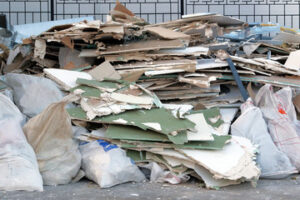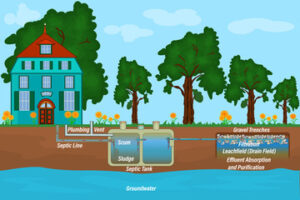Junk removal companies can save you a lot of time and money when you need to get rid of junk. They can even help you avoid costly landfill fees by recycling and donating items.

Traditionally, junk removal was a “one man with a truck” type of business. But times have changed, and now most junk removal companies are insured, licensed, and bonded. Visit Website to learn more.
Junk removal companies that prioritize recycling can help reduce the amount of waste that ends up in landfills. They can also provide other environmental and social benefits. For example, they can help save natural resources such as timber and metals by using recycled items. In addition, they can contribute to local economic development by providing jobs.
The junk removal industry is a great option for entrepreneurs who want to do something good for the environment. It is a fast-growing business, and it has strong demand. The average American moves every five to ten years, and with each move, they have extra furniture and other items they need to get rid of. Many people also start new businesses, and these can generate a lot of junk. In addition, the EPA states that 75 percent of household junk is recyclable. Therefore, it’s important for junk removal services to offer recycling options.
There are different types of junk, and each type requires a specific disposal method. For example, electronic waste (e-waste) must be disposed of in a safe manner to protect the environment. This involves taking it to a specialized facility that recycles or reuses the materials. This process reduces the environmental impact of e-waste and helps conserve natural resources.
In addition to disposing of junk responsibly, many junk removal companies also donate items that are in good condition. This reduces the amount of trash that is sent to landfills and helps families in need. It is also a great way to promote a company’s green initiatives and show its commitment to sustainability.
Before starting a junk removal business, it is essential to know your target market and what services you will offer. This will help you develop a marketing strategy that appeals to your target audience. For example, you can focus on residential clients, commercial properties, or construction sites. This will allow you to customize your services and pricing to meet the needs of each group. Additionally, it is important to understand the regulatory requirements for your state. For example, some states require junk removal companies to have a permit and insurance before operating.
Donation
Many junk removal companies are socially conscious, and making sure that reusable items don’t end up in landfills is a top priority for them. This means that items like old furniture, metals, and even electronic devices are often taken to charity thrift shops or job training centers so they can be used by people in need. In some cases, they may also be taken to schools where they can be used for educational purposes.
Some junk removal services also offer property clean outs, which can be helpful for landlords, real estate agents, and homeowners who are preparing to sell or rent a home. This service can make it easier to get a house ready for sale by clearing out clutter and debris, and it can also help families move into new homes in a more organized way.
Junk removal experts are skilled at determining the best eco-friendly disposal method for each type of item, and they may charge per square foot or by the weight of the load. Depending on the situation, they may also donate items to charities or recycle them at local facilities.
Landfill
Junk removal professionals are experts in determining the best eco-friendly disposal method for every junk item they take in. This means recycling some items, donating others, and sending other items to the landfill. They are often located close to waste disposal facilities, allowing them to easily drop off items when they can’t be recycled. Many junk removal companies will also donate gently used, working items to local charities.
The junk removal industry is a fast-growing business that offers a variety of services for both homes and businesses. To be successful in this industry, you should understand who your customers are and tailor your marketing, pricing, and advertising to their needs. You should also focus on specific market segments, such as residential or commercial clients. Narrowing your market will help you grow faster and improve the profitability of your business.
In the past, people discarded their trash on the streets or sent it to garbage dumps. However, these methods became unsustainable due to health concerns. Cholera outbreaks sparked the Nuisance Prevention Act of 1846 and Public Health Act of 1875, which brought regulations to the waste management industry.
A landfill is a large, underground storage facility for solid waste. It is usually designed with a buried cover to reduce the risk of environmental contamination. It is a safe alternative to open dumps, which are often dangerous for the environment and the health of those who work there. Landfills are regulated by state and federal laws to ensure they don’t pollute groundwater or water bodies. They are also required to be covered daily to prevent odors and vermin from arising.
Some items, such as Styrofoam, are not recyclable and can only be disposed of in a landfill. However, some junk removal companies will try to reuse or recycle these items before sending them to the landfill. Some even offer a green recycling service for their clients.
If you are thinking of starting a junk removal company, it is important to consider the environmental impact of your operations. A lot of potential clients are environmentally conscious and want to do their part in preserving the earth. To attract this group of customers, you should focus on recycling and donating items before sending them to the landfill.
Disposal
Whether you’re cleaning out your garage, getting ready to move, or renovating your home, junk removal companies help keep unwanted items out of landfills. They also recycle, donate, or repurpose items as much as possible, which helps reduce waste and energy consumption. And finally, they minimize the amount of plastic that ends up in our oceans and rivers. Many of these junk removal services are eco-friendly and offer free or discounted pickup for large items.
Junk removal can be a messy job, but it’s an important one. Each year, we produce more trash than ever before – 800 – 1,100kg per person – and the junk removal industry plays a key role in keeping our communities clean. The competition in this business is stiff, but it’s worth the effort to find a junk removal company that can meet your needs.
The most common way junk removal companies operate is to have a salesperson come to your house to give you a quote in-person. But some junk removal services are now able to skip this step and provide quotes online or over the phone. This makes the process much faster and easier. Plus, you’ll save money by not having to pay for an on-site estimate.
While the bulk of junk is recyclable, some types of junk can’t be recycled or reused. This includes things like dead animals, feces, blood, and urine. Some items can also be hazardous, such as mold, asbestos, aerosol cans, mercury, and fluorescent light bulbs. Some junk removal companies won’t remove these items, but you can usually hire a specialty service to do so.
Most full-service junk removal companies pride themselves on being socially and environmentally responsible. They often separate reusable and recyclable items from those that will go to the dump, and they donate or reclaim salvageable goods whenever possible. This helps families in need and cuts down on waste in our environment.
If you’re interested in starting a junk removal company, be sure to research the local market and target audience before you start investing your time. The right niche will help you attract more customers and build a strong business. Whether you choose to focus on residential clients, commercial properties, or construction sites, make sure your marketing and advertising efforts reflect the specific needs of these groups.
